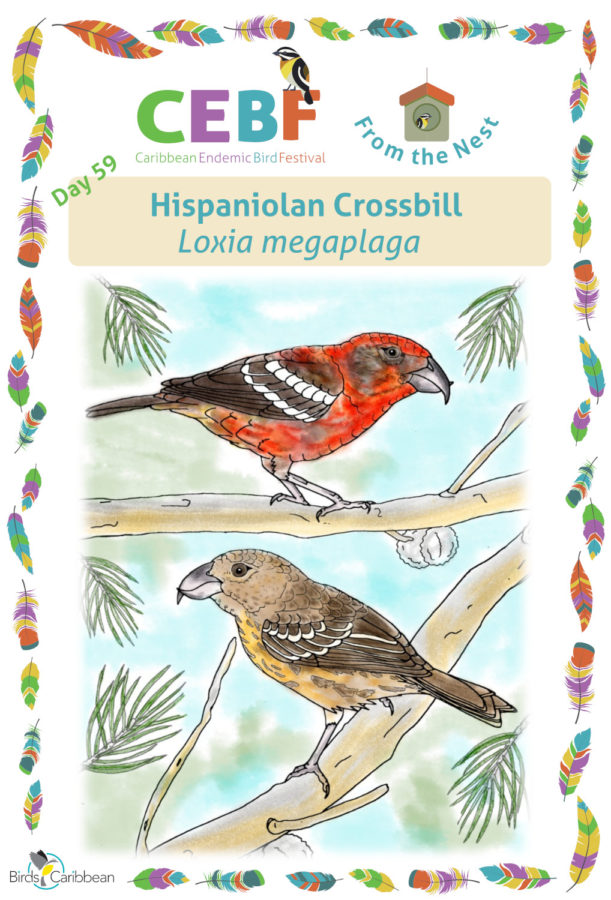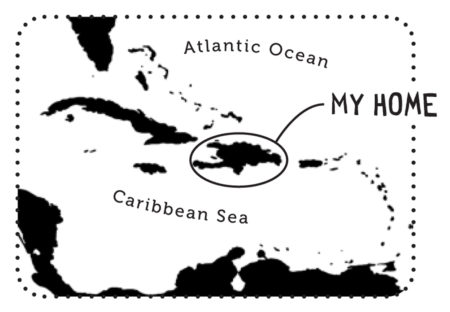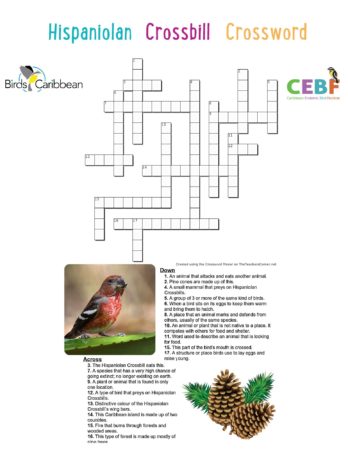Celebrate the Caribbean Endemic Bird Festival (CEBF) with us! Our theme in 2021 is “Sing, Fly, Soar—Like a Bird!” Have fun learning about a new endemic bird every day. We have colouring pages, puzzles, activities, and more. Download for free and enjoy nature with your family at home.
Endemic Bird of the Day: Hispaniolan Crossbill
The high-elevation pine forests on the island of Hispaniola are peaceful, unhurried, and tranquil, far removed from the hustle and bustle of the cities and towns. The air is cool and pure there, and although it is mostly undisturbed by human activity, that doesn’t mean that it’s quiet: when the wind blows briskly, as it often does, the whooshing sound can be as loud as a train going by. And if you listen carefully, you just might hear another sound up in the pines, a staccato, metallic sound, reminiscent of those old electric typewriters: tink-tink-tink-tink. That would be the Hispaniolan Crossbill.
The crossbill is a specialized finch, about 15 cm in length, the males sporting a mottled rich red body and black wings with two strong white wingbars. The females have yellowish and streaky bodies. But the crossbill’s most distinctive feature is reflected in its name: it has an obviously crossed bill. It is very surprising when you first see it: the top mandible curves to the right at the tip and crosses over the lower mandible, which curves to the left. What? Why does it do that? Is it deformed?
It is not a deformation, it is an adaptation for the crossbill’s main food: pine seeds, that it extracts from the pine cones by positioning the tips of its open bill on opposing pine scales and then opening its bill, forcing the scales apart. It then extracts the seed with its tongue. Pretty clever, right?
Crossbills flock together, and you rarely see (or hear) just one. In fact, this bird is often heard before it is seen. It is often quite vocal. And they are nomadic, traveling throughout the pine forests in search of mature cones. It is considered Endangered due to reduced habitat and forest fires. Thankfully, the pine forests in the Dominican Republic are legally protected, but in Haiti, they are very much at risk.
It is well worth a trip to the mountains on Hispaniola just to enjoy the magical place. And while you’re there, keep your ears tuned, you just may hear this magical bird, and hopefully see it as well. Learn more about this species, including its range, photos, and calls here.
Colour in the Hispaniolan Crossbill
Download our West Indies Endemic Bird colouring page. Use the photos below as your guide, or you can look up pictures of the bird online or in a bird field guide if you have one. Share your coloured-in page with us by posting it online and tagging us @BirdsCaribbean #CEBFfromthenest
Listen to the calls of the Hispaniolan Crossbill
The calls of the Hispaniolan Crossbill are a high-pitchet repeated “chu-chu-chu-chu”
Puzzle of the Day
Click on the image below to do the puzzle. You can make the puzzle as easy or as hard as you like – for example, 6, 8, or 12 pieces for young children, all the way up to 1,024 pieces for those that are up for a challenge!
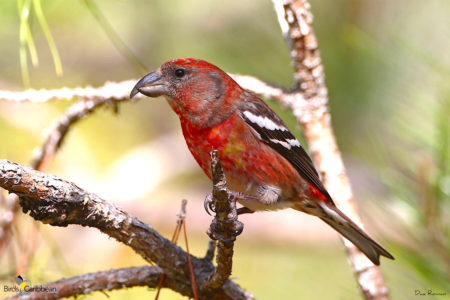
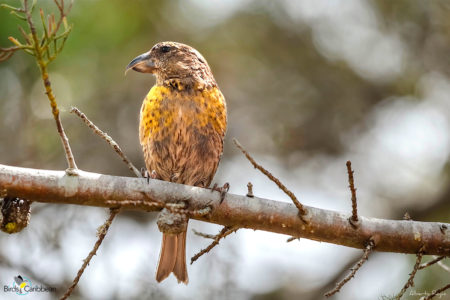
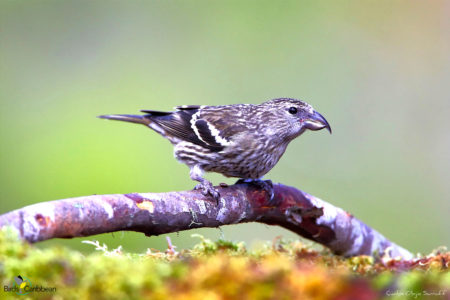
Activity of the Day
FOR KIDS: How much do you know now about the Hispaniolan Crossbill? Test your knowledge with our crossbill crossword puzzle! All about this bird, where is lives, what it eats, and its behaviour. Try to remember as much as you can, but if you are not sure of an answer you can check back to the text above or take a look at the Hispaniolan Crossbill page on ebird! And you can find the answers here.
FOR KIDS AND ADULTS: Enjoy these videos of Hispaniolan Crossbills- keep an eye out for their amazing crossed-over beaks! In the first you can see the colourful red male taking a bath in a puddle. The second shows some yellowish and streaky females and juvenile birds having a drink.

